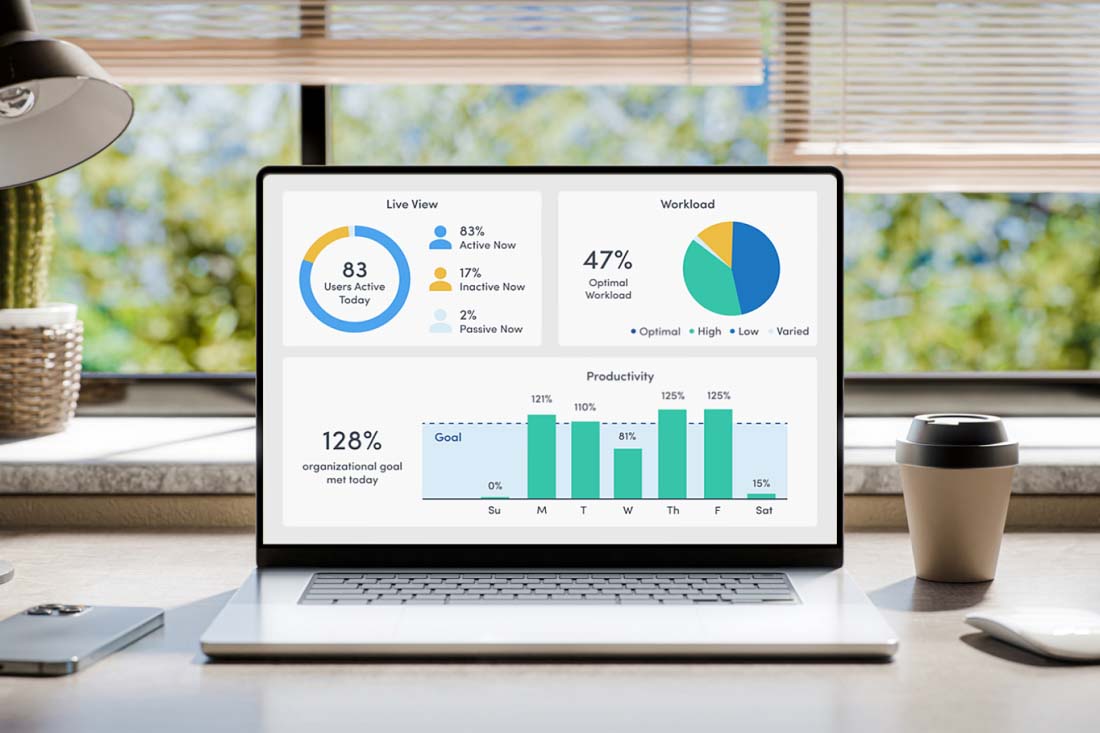Work Hours Per Month in 2025: What Employee Monitoring Can Reveal
How Many Work Hours In A Month? (2025 Edition)
When you’re managing a team, planning a project, or simply trying to understand workforce costs, one question is bound to come up: How many work hours are there in a month?
While it sounds like a simple calculation, monthly work hours vary depending on multiple factors like holidays, weekends, and leap years. Especially in today’s flexible work culture—where remote, hybrid, and shift-based schedules are common—having clarity on this number is critical.
Why Work Hours Matter More Than You Think
Whether you’re handling payroll, scheduling client deliverables, or reviewing project timelines, knowing how many hours employees are expected to work each month is vital. It helps with:
- Payroll and benefits calculation
- Determining overtime and compliance
- Forecasting project resources
- Managing workloads and deadlines
For full-time employees, a standard workweek usually includes 8 hours per day, 5 days a week—totaling 40 hours per week. But when it comes to monthly calculations, things get slightly more complex.
This is also where using employee monitoring software can simplify things significantly—by offering automated records of attendance, activity, and real-time time tracking.
Not Every Month Is Created Equal
The number of work hours in a month changes based on the number of weekdays, national holidays, and the structure of the calendar. Here’s a quick breakdown of how it plays out across different types of months:
- A 31-day month typically includes 23 working days, which means around 184 work hours.
- A 30-day month usually has about 22 working days, leading to 176 work hours.
- February, being the shortest month, averages 20 working days, giving about 160 work hours in a non-leap year.
These are all estimates, and the exact number depends on which day of the week the month begins and how holidays fall that year.
Variables That Affect Monthly Work Hours
Several real-world factors can change the number of working hours in any given month:
1. Public Holidays
National and regional holidays have a direct impact. For instance, if Independence Day falls on a Wednesday, that’s one full workday subtracted from the total work hours of July. These holidays vary by country and state, which is why monthly work hour calculations aren’t universal.
2. Weekends
Most businesses follow a Monday to Friday schedule, meaning weekends are typically non-working. However, industries like hospitality, healthcare, and retail might operate seven days a week or on rotating shifts.
3. Leave and Absenteeism
Even if the calendar allows for 176 work hours, employee leave can reduce actual hours worked. This includes vacation time, sick leave, or any form of paid time off.
4. Flexible Work Schedules
Remote or hybrid work arrangements may have employees logging fewer or more hours depending on their agreement. Some might follow a compressed workweek, while others log in from different time zones altogether.
These varying work patterns are more manageable when tracked through reliable employee monitoring software, which provides accurate insights into actual work hours logged.
How to Calculate Monthly Work Hours
While there’s no one-size-fits-all answer, a basic approach can still give a reliable estimate:
- Count the number of working days in the month (exclude weekends and holidays).
- Multiply by the standard work hours per day (usually 8 hours).
Let’s say a month has 22 working days. Multiply that by 8 hours/day and you get 176 work hours for that month.
If you’re managing freelance or part-time workers, you may also want to consider tracking actual time spent on tasks rather than assumed hours—especially for billing or productivity assessment. Employee monitoring software can be incredibly useful here, offering real-time tracking and analytics.
Work Hours vs. Calendar Hours
There’s often confusion between total calendar hours and actual work hours. A typical month has 720 to 744 total hours (30 or 31 days × 24 hours). But clearly, no one works 24 hours a day. The average employee works between 160 to 184 hours per month, depending on the month’s structure.
This distinction matters when:
- Calculating hourly rates for freelancers
- Assessing employee availability
- Planning team bandwidth across multiple departments
To avoid miscalculations, many businesses rely on employee monitoring software to generate precise time reports aligned with real working hours.
How Employee Monitoring Software Makes This Easier
Keeping track of all this manually can be tedious, especially if you’re managing a large or remote workforce. That’s where employee monitoring software steps in.
These tools help track work hours, tasks, and productivity in real time—eliminating the guesswork and ensuring accurate timekeeping.
Here’s how it helps:
- Automatic Time Tracking: Know exactly when employees log in, log out, and how many hours they’ve worked—even across time zones.
- Productivity Reports: Get detailed insights into what tasks are being worked on and how long they take.
- Leave and Absence Records: Easily see how time off impacts monthly hours.
- Payroll Integration: Convert tracked time directly into payroll-ready data.
- Remote Team Management: Ensure visibility and accountability, even if your team is scattered across locations.
By using software instead of spreadsheets or punch-in cards, companies can reduce human error, maintain compliance, and get a clearer picture of productivity. Tools like EmpMonitor also allow managers to access detailed analytics and behavior tracking—all from one intuitive dashboard.
Whether you’re leading an in-house team or a hybrid workforce, having a dependable employee monitoring software is key to aligning actual work time with business expectations.
How Many Work Hours Without Weekends?
For a quick calculation, if you remove weekends from a month, you’re generally left with about 20 to 23 working days. Multiply that by 8 hours, and your typical monthly total ranges from 160 to 184 hours.
Of course, this is still a surface-level estimate. If your team works weekends, operates on shifts, or has regional holidays, you’ll need more precise tools to account for those differences. That’s another area where employee monitoring software proves invaluable—giving you transparency across all work models.
Final Thoughts
Understanding how many work hours are in a month isn’t just about admin accuracy—it directly impacts payroll, productivity, employee wellbeing, and overall business efficiency.
In today’s dynamic workplace, fixed schedules are no longer the norm. From flexible hours to remote work, businesses need smarter ways to track time and performance. That’s where employee monitoring software becomes not just useful, but essential. It takes the complexity out of timekeeping and helps ensure both employers and employees are aligned in their expectations and output.
So the next time you find yourself wondering how many work hours there are in a month, remember: it depends—but with the right systems in place, it’s easy to stay on top of it.
Keep an eye for more latest news & updates on Washington Glamour!






